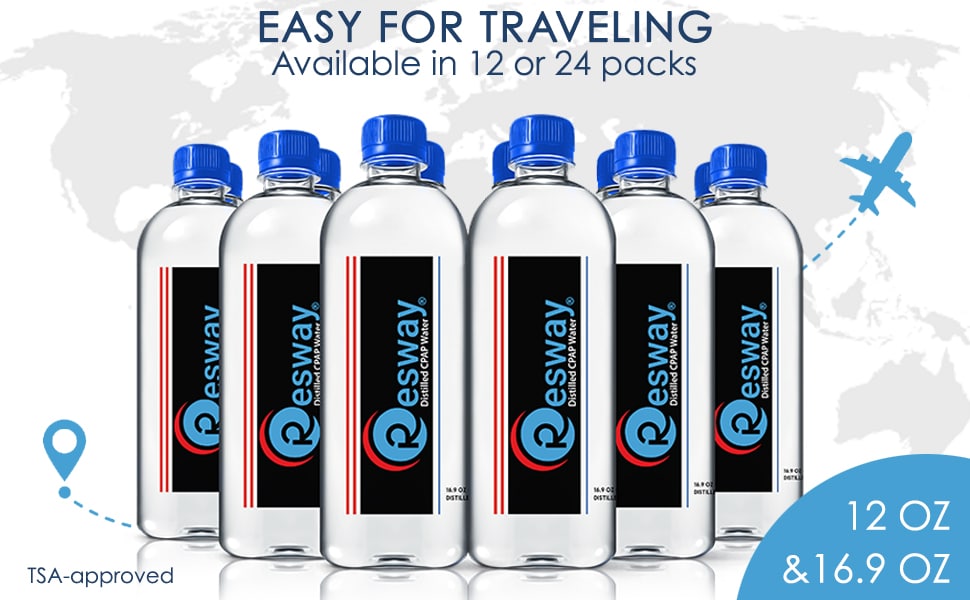Finding the ideal comfortable CPAP mask is essential to guarantee that your treatment is pleasant and successful. There is no one size fits for CPAP masks. Which CPAP mask is ideal for you depends on whether you breathe through your nose or mouth, your favorite sleeping position, and your budget. In this guide, we listed the most comfortable CPAP masks based on user feedback and years of expertise to make choosing the suitable mask simple.
How Do We Find The Most Comfortable CPAP Mask For You?
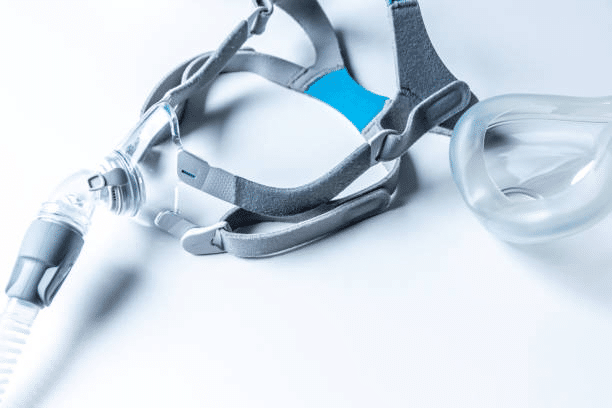
CPAPwater has conducted thorough research on hundreds of CPAP masks to make your purchase easier. We narrowed down the options to masks from trusted brands with high customer ratings, compatibility with a variety of CPAP machines, and various CPAP accessories. Our selection process emphasized the perfect balance of top-notch features, affordability, and longevity.
How CPAP Therapy Can Be Used To Treat Central And Obstructive Sleep Apnea
Obstructive and central sleep apnea are treated with CPAP therapy, often the initial option. A hose that attaches to a mask is used to distribute compressed air from a CPAP machine as part of the therapy.
Depending on the type, a CPAP mask forms an airtight seal over your mouth, nose, or both. By allowing you to breathe in compressed air, you may maintain your upper airway open while you sleep and live more efficiently.
How To Choose A Comfortable CPAP Mask For Your Needs By Understanding The Various Styles
CPAP masks come in a variety of designs. Each CPAP mask has a different form and seal, but they all utilize headgear to keep it in position.
Various mask models are ideal for multiple users depending on their breathing patterns, comfort preferences, and pressure requirements.
Nasal CPAP Masks
A cushion on CPAP masks forms a seal around the nostrils and rests immediately below the nose. Typically, silicone or a gel substance is used to create the mask cushion.
This nasal mask shape is appropriate for many side and stomach sleepers since it is lightweight and has a small facial imprint. However, those who need more excellent CPAP pressure settings could find the nasal cushions’ focused airflow bothersome.
Nasal Pillow CPAP Masks
Nasal masks are made of cushioned frames that cover the nose from the nasal bridge to the region above the lip. The substance used for the frame cushion might be silicone, memory foam, or gel.
This kind of mask, available in various sizes and forms, strikes a solid balance between the full-face mask’s more prominent profile and the nasal pillow mask’s simple aesthetic. It is also a good fit for people with facial hair.
Full-Face CPAP Masks
Full-face CPAP masks feature a padded frame that encloses the nose and mouth. A full-face mask may also refer to CPAP masks that enclose the face entirely; however, this use is less prevalent. People who mostly breathe via their mouth when they sleep should generally choose this style of mask.
Also Read: CPAP Mask Types: Everything You Need To Know!
The Most Comfortable CPAP Masks For Your Sleep Apnea: Our Top Picks
ResMed AirTouch F20 Full Face CPAP Mask with Headgear

A variety of sleepers may readily use the ResMed AirTouch F20 Full Face CPAP Mask with Headgear. The AirTouch F20 stands out for its memory foam design compared to other CPAP masks on the market that employ silicone cushions. The memory foam produces a soft and cozy cushion that efficiently seals and adapts to the contour of your face.
The AirTouch F20 accommodates users who breathe via their lips or nose as they sleep and works well with various pressure settings.
Despite having a full-face shape, this model can comfortably suit practically any face with a clear line of sight because of its three cushion sizes. A For Her version of the ResMed AirTouch F20 is also available with a smaller headpiece.
ResMed’s Air series headgear, which works with the company’s AirTouch and AirFit mask cushions, is attached to the mask. A quick-release elbow for the hose and magnetic strap clips make the helmet simple.
Once each month, the AirTouch F20 cushions should be changed. You should refrain from immersing them in water for cleaning. As an alternative, frequently clean them with a cloth or CPAP wipe.
AirTouch F20 Full Face CPAP Mask Highlights:
- Mask cushion made of memory foam feels comfortable yet tightly sealed
- There are three different mask sizes
- The quick-release elbow and magnetic clips make it simple to put on and take off
The AirTouch F20 Full Face CPAP Mask is Ideal for:
- Anyone who likes memory foam’s softer feel
- Those with delicate skin
- Those who sleep with their mouths open
Philips Respironics DreamWear Full Face CPAP Mask
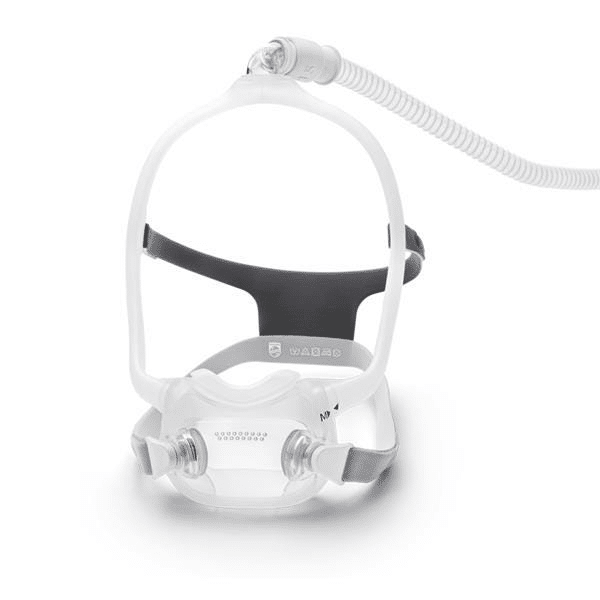
With its low profile and flexible fit, the Philips Respironics DreamWear Full Face CPAP Mask ensures a secure seal in any sleeping position. The DreamWear’s distinctive under-the-nose design sets it apart from most other full-face masks available today. Due to this, you will feel less claustrophobic and have a smaller facial imprint. It also causes less skin irritation.
The Philips Respironics DreamWear Full Face CPAP Mask’s design enables a personalized fit. The mask boasts soft, flexible headpiece straps and four adjustment points. This allows you to adjust the fit so the mask remains sealed even if you regularly move and change positions as you sleep. For those who want to walk about while they sleep, it also has a top-of-head connection for the CPAP hose.
Philips Respironics DreamWear Full Face CPAP Mask highlights:
- The mask remains in position and sealed thanks to four adjustment points
- Full-face design that is low-profile and unconfined
- The attachment at the top of the head keeps the hosing out of the way
The Philips Respironics DreamWear Full Face CPAP Mask is ideal for:
- Those who regularly shift sleeping positions
- People who sleep with their mouths open while breathing
- Anyone desiring the advantages of a full-face mask without the size
ResMed AirFit F30 Full Face CPAP Mask
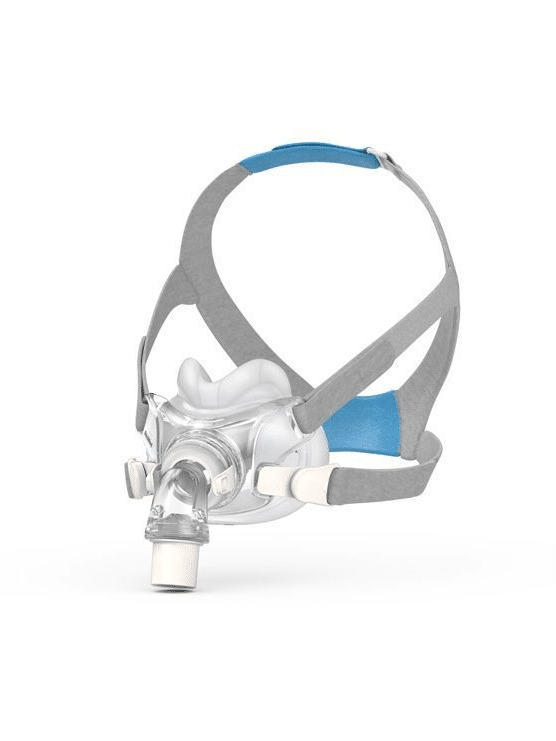
With a clear line of sight and less bulk than conventional full-face mask designs, the ResMed AirFit F30 Full-Face CPAP Mask enables you to wear glasses quickly. Its silent elbow and venting also provide fewer interruptions when you read, watch TV, or sleep.
You have a choice of small or medium-sized cushions. ResMed provides a thorough size guide to assist you in determining a suitable fit before buying. One-size-fits-all headgear with magnetic clips is included with the AirFit F30 Full Face CPAP Mask for fast removal.
Four adjustment points are included on the supple, flexible nylon headpiece straps to allow for comfortable mask-fit customization. The straps also aid in stabilizing the cushion and securing its fit over your face’s contours. Fewer pressure points that might irritate the skin produces a robust seal.
ResMed AirFit F30 Full-Face CPAP Mask Highlights
- Low-slung, full-face profile
- Ultra-plush headwear
- Secure seal lowers pressure points
The ResMed AirFit F30 Full-Face CPAP Mask is ideal for:
- Those who like reading or watching television before night
- Back sleepers
- Those who breathe through the mouth while sleeping
ResMed AirFit N30i Starter Pack
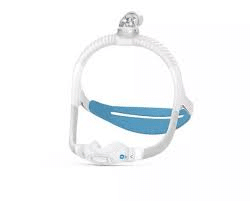
A common concern among those beginning CPAP treatment is finding the most comfortable CPAP masks. The ResMed AirFit N30i Starter Pack, which includes three cushion sizes to try out at home and find the ideal fit, is an excellent choice for anybody new to CPAP.
People who may not be used to sleeping with the right CPAP mask are intended to feel comfortable and have freedom of movement with the ResMed AirFit N30i. The thin, portable mask has a silicone nasal cushion that sits on the bridge of the nose.
The AirFit N30i produces a stable seal despite its modest size. You may shift about and switch your sleeping positions thanks to the top-of-head hosing attachment. As a result, stomach, side, and combination sleepers will find the AirFit N30i a comfortable option.
Customers may further alter the fit of the mask by selecting between tiny or average headpiece sizes. Consider using a chinstrap with the ResMed AirFit N30i mask if you breathe through your mouth to avoid air leakage.
ResMed AirFit N30i Starter Pack Highlights:
- Includes a set of small, medium, and tiny broad cushions.
- Lightweight and compact design
- Mobility with a top-of-head hose connection
The ResMed AirFit N30i Starter Pack is ideal for:
- Sleepers who are active
- Belly sleepers
- People wearing more enormous masks who experience claustrophobia
ResMed AirFit P10 Nasal Pillow CPAP Mask

The ResMed AirFit P10 Nasal Pillow CPAP Mask is one of the most comfortable alternatives for side sleepers because of its very lightweight and small size. The nasal pillow mask is discrete and straightforward to use while you sleep. The light, elastic split-strap headwear is meant to minimize face touches.
When you move or alter your sleeping position, the dual-wall nasal pillow cushion of the AirFit P10 seals it in place and prevents it from moving on your face. The AirFit P10 is simple to dismantle for cleaning with just three components.
There are two sizes available for the AirFit P10: standard and for her. Small, medium, and large nose pillows are included with the regular fit, while the For Her option comes with a smaller headpiece and extra tiny, small, and medium nasal pillows.
ResMed AirFit P10 Nasal Pillow CPAP Mask Highlights:
- Sleek style
- Contains three mask cushion sizes for personal use.
- Equipped with silent venting technology
The ResMed AirFit P10 Nasal Pillow CPAP Mask is ideal for:
- Those who experience claustrophobia while wearing a full-face mask
- Nasal breathers as they sleep
- Individuals with those who have delicate skin
ResMed AirFit N20 For Her Nasal CPAP Mask
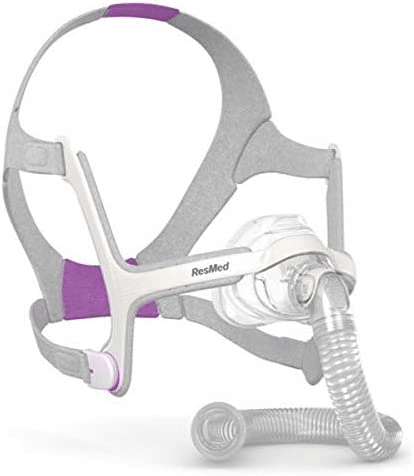
The ResMed AirFit N20 For Her Nasal CPAP Mask is made to fit people with tiny faces well since it has headgear scaled down to fit small heads. You can select from small, medium, or large cushion sizes to further tailor the fit.
The AirFit N20 For Her cushion conforms to your face to form a tight seal, making it an excellent option for those who like to move about while they sleep.
A cushioned frame and soft-feeling headband are part of the mask’s design. The AirFit N20 is intended to be quickly and easily assembled and disconnected thanks to integrated magnetic clips and a quick-release mechanism on the hose elbow.
ResMed AirFit N20 For Her Nasal CPAP Mask Highlights:
- InfinitySeal technology aids in maintaining seal integrity
- Padded structure and plush headpiece for enhanced comfort
- Designed to be simple to don and doff
The ResMed AirFit N20 For Her Nasal CPAP Mask is ideal for:
- Petite-faced individuals
- Those who sleep and breathe via the nose
- Individuals with sensitive skin
How to Narrow Down Your Search for the Best Comfortable CPAP Mask
Finding the ideal CPAP mask for your requirements might be challenging, with many types and models to select from. You may whittle down the options by considering your budget, preferred sleeping position, and comfort level, but it can take some trial and error.
Recognizing Size, Price, And Features
Comfortable CPAP masks are available at various pricing ranges, much like CPAP machines. A CPAP mask may range from $20 to over $100. Its design, construction, and features heavily influence a CPAP mask’s price.
Most individuals can find a CPAP mask that fits their face because of the variety of sizes available. Remember that CPAP mask sizes vary across manufacturers and are not standardized.
Most CPAP masks are relatively small and may be stored on a nightstand with your CPAP machine. Use the manufacturer’s sizing chart for the particular mask model you’re interested in to get the correct size. A link to instructions for determining your size is often included on the product pages for CPAP masks.
Appropriate CPAP Mask For Your Sleeping Position
Most options for CPAP mask types are available to back sleepers, with full-face, nasal, and nasal pillows masks all being viable choices based on comfort preferences and pressure needs.
Side sleepers, who often like the smaller profile of nose masks or nasal pillows, may find the bulkier construction of full-face masks unpleasant. The options available to stomach sleepers are often more restricted, with nasal pillows’ simple shape as the only reliably supportive alternative.
The recommended CPAP pressure setting and a person’s sleep position may affect comfort and treatment compliance. The direct airflow of nasal pillows may be unpleasant for specific users in a high-pressure setting. It may aggravate nasal irritation and congestion, even though full-face and nose masks are more compatible with higher pressure levels. One way to lessen the possibility of these adverse effects is to use a CPAP humidifier.
Also Read: How Sleep Position Can Improve CPAP Therapy for Sleep Apnea
The Ideal CPAP Mask For Full Therapy Benefits
The most effective CPAP mask is pleasant to use and enables you to regularly benefit from CPAP treatment. Others prefer the indirect airflow of the nose or full-face masks, while other CPAP users prefer the primary form of nasal pillow masks.
Try as many different types and designs as possible, and talk to your doctor or a sleep expert about any comfort concerns. Common issues, including an inadequate fit, air leaks, dry mouth or nasal passages, and getting acclimated to the pressure feeling, may all be resolved with their assistance.
Make Sure Your CPAP Mask Is Compatible
Any CPAP mask you buy should be suitable for your CPAP machine. Most CPAP masks on the market work with all CPAP machines, although there are a few exceptions to this generalization. Always double-check compatibility before making a purchase.
Comparing Comfort and Durability of CPAP Mask Materials
Your mask’s comfort and longevity may be impacted by the materials used in its construction. A flexible silicone cushion, one or more elastic straps, and a plastic frame are standard components of CPAP masks. There are various CPAP masks available that include inflatable or memory foam cushions.
Choosing the Right Accessories

Standard accessories for CPAP masks include a cushion, headgear, and a small piece of tubing. You will need to change these parts regularly since they are essential for CPAP treatment.
While not required, additional devices might increase your CPAP comfort. These include accessories like CPAP cushions, chinstraps, and mask liners. Be cautious to confirm their compatibility with your current apparatus before acquiring any CPAP accessories.
Cushions And Headgear Accessories
The soft, flexible mask part that lays on your face is called a CPAP cushion. The straps that go around your head make-up the headgear. Over time, these crucial parts deteriorate and may need to be replaced.
Hosing Accessories
The crucial element that links your mask to your CPAP machine is hosing. Most comfortable CPAP masks come with a short length of tubing, but if you want greater mobility, you may need to purchase a longer piece.
Mask Liners Accessories
Your CPAP mask’s cushion is encircled by a mask lining. Although it is not necessary, this item may lessen skin sensitivity and cover leaks. Liners could also help your mask cushion last longer.
Chinstraps Accessories
An elastic band that wraps over the top of your head and the base of your chin is known as a CPAP chinstrap. Although it is not necessary, it may aid in keeping your mouth closed and promote nasal breathing to avoid air leaks and dry mouth.
CPAP Pillows Accessories
An optional item, CPAP pillows may make sleeping simpler while using your CPAP mask. Most of these specifically created pillows include a cutout so that you may lie on your side without your CPAP mask falling off.
Tips for a Successful Start to CPAP Treatment
Although starting CPAP treatment might be unsettling and daunting, there are specific guidelines you can follow to ensure success with your new CPAP mask.
CPAP Mask Maintenance
The frame and tubing should be changed every three months, the headgear every six months, and the cushion or nasal pillow of your CPAP mask once a month.
Consult the maker of your mask for more information on replacement schedules. To maintain your CPAP mask hygienic and running correctly, it’s crucial to change mask components regularly.
A Long Hair With CPAP Mask
Facial hair may be styled in a loose braid or ponytail or wrapped in a scarf or another head covering. The CPAP mask straps shouldn’t tangle, mat, or slide because of this.
Placing Your CPAP Mask On
Initially, sit straight on your bed to put on your CPAP mask. Place the mask on your head and face by loosening the straps on the headpiece. Next, get into bed and lie down as you would go to sleep.
Once the mask straps feel snug but not too tight, start gradually tightening them. Ensure that the hose is correctly attached to your mask and the CPAP machine. Back down and start the machine. Make any necessary final adjustments after checking for air leaks.
Insurance Coverage for CPAP Masks: What You Need to Know?
Although CPAP treatment might be pricey, the necessary equipment can be covered by insurance.
A prescription is required to acquire a CPAP mask. CPAP systems, including CPAP masks, are classified as Class II medical devices by the Food and Drug Administration. This aids the FDA in ensuring the safety and efficacy of CPAP masks, but it also means a prescription from your doctor is required before you can purchase one.
The cost of a CPAP mask is partially covered by Medicare and most insurance policies. Medicare often pays for the first three months of CPAP treatment. If your doctor finds that CPAP helps you deal with your symptoms, Medicare may cover more of your CPAP equipment and related items, like a CPAP mask.
The amount of coverage for private insurance varies on your plan, so be sure to check with your insurance provider first. You may have to submit a claim form to have your CPAP mask reimbursed if you bought it from a third-party store.
CPAP masks may be purchased from accredited vendors in person or online. Additionally, you may get them straight from a doctor’s office or sleep center.
Online stores often have the most affordable prices for the widest range of models and brands. Before making a purchase, however, be careful to check with your insurance provider since some insurers have restrictions on where you may buy specific models.
How to Ensure the Best Hygiene by Thoroughly Cleaning Your CPAP Mask
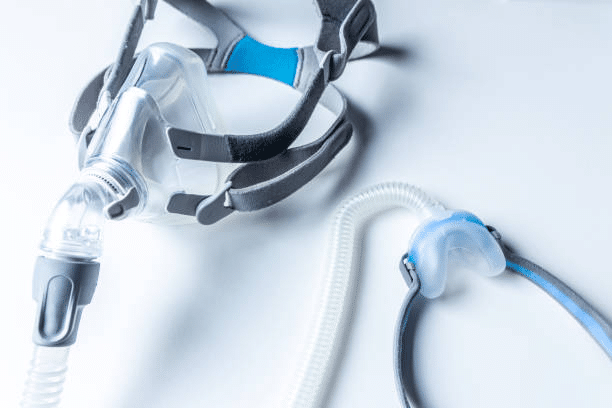
Each night, your CPAP mask is near your face. It’s crucial to maintain the cleanliness of your CPAP mask as a consequence. Use a moist cloth or a CPAP wipe to clean the mask cushion, nasal pillow, and other surfaces that touch your skin after each use.
Give your CPAP mask a more thorough washing once each week. To clean your CPAP mask, you’ll need the following:
- A tub or sink
- Hot Water
- Gentle Soap
Your CPAP mask should be disconnected from the device and tubing. Warm, soapy water should be added to a tub or sink. Avoid using strong cleaning products like bleach or rubbing alcohol since they might destroy your CPAP mask and make breathing difficult. Rinse the mask with warm water after gently washing it. Allow your mask to air dry outside. The same technique should be used weekly to clean your CPAP tubing, helmet, mask cushion, or nasal pillow.
Although these are only basic recommendations, it’s always a good idea to ask the manufacturer for cleaning advice. Additionally, you should have an extra mask on hand to wear while the first one dries.
Choosing the Most Comfortable CPAP Mask For Your Needs
When searching for comfortable CPAP masks, be cautious in your selection, as finding the right one that suits your needs can be a challenging process, often requiring multiple attempts. Finding the ideal mask could take time since many CPAP Mask styles and sizes exist. Every time you convert to a new model, there is an adjustment period, so allow yourself some time to find the finest CPAP Mask for your health and degree of comfort.
Discover a wide range of high-quality CPAP accessories in our Amazon store, tailored to enhance your sleep therapy experience. Explore our collection and take the first step towards a more comfortable and effective CPAP journey.




